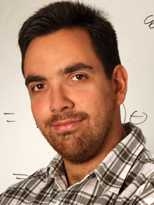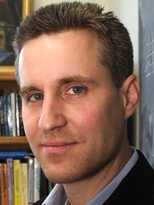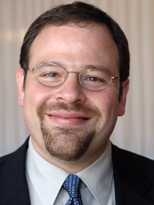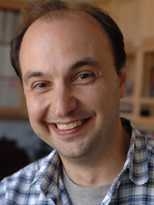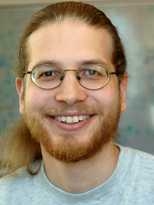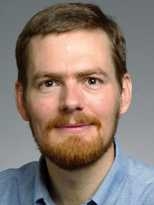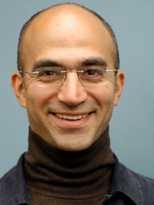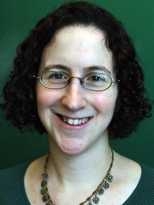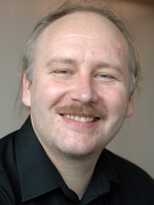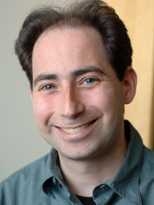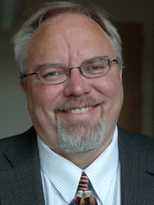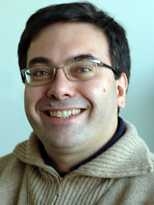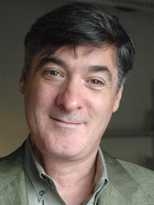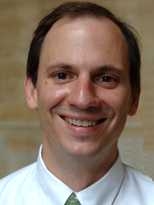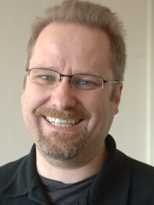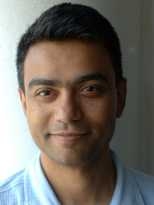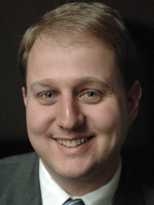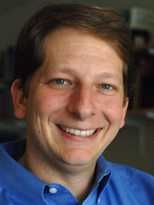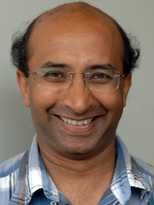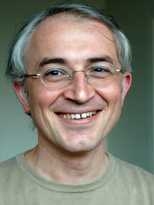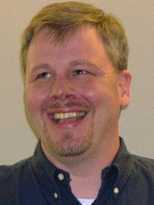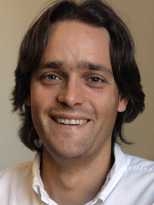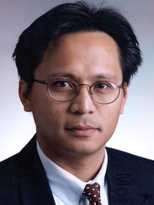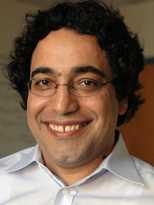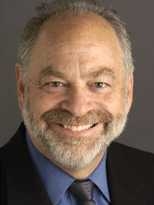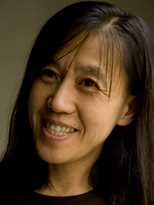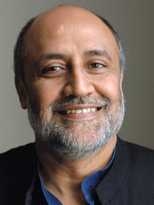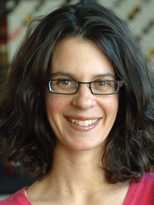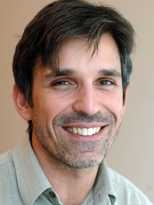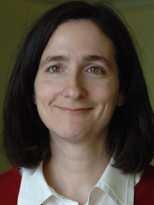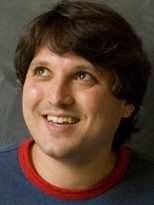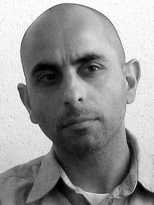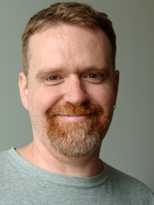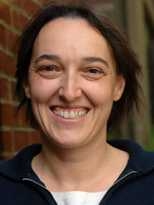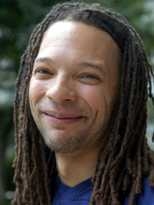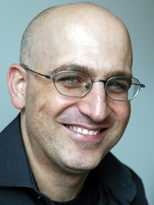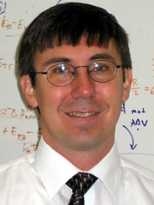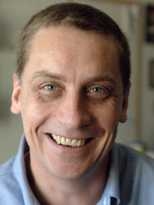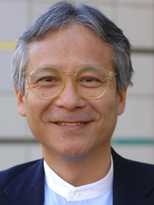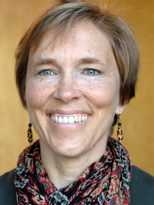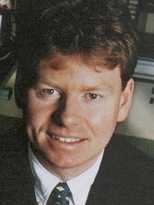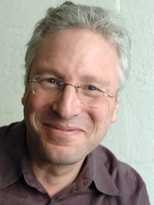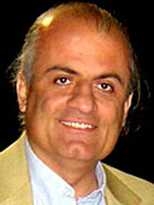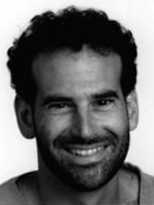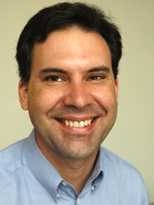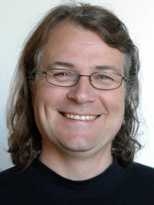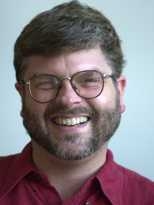The Corporation's Executive Committee has approved 50 faculty for tenure, effective July 1, 2007. The three groups are:
TENURED ASSOCIATE PROFESSORS
Unless otherwise noted, all promotions are from associate professor without tenure to associate professor with tenure.
George-Marios Angeletos
Economics
Education: B.A. 1996, M.S. 1997 (both from Athens University), M.A. 2000, Ph.D. 2001 (both from Harvard University)
Joined MIT faculty: 2001
Angeletos is an economic theorist whose most recent research has examined economic environments in which agents have limited and dispersed information about aggregate economic conditions.
Martin Z. Bazant
Mathematics
Education: B.S. 1992, M.S. 1993 (both from University of Arizona), Ph.D. 1997 (Harvard University)
Joined MIT faculty: 2000
Bazant is an expert in physical applied mathematics. His current research focuses on microfluidics, electrochemical systems and granular flow.
Adam Berinsky
Political Science
Education: B.A. 1992 (Wesleyan University), Ph.D. 2000 (University of Michigan)
Joined MIT faculty: 2003
Berinsky is a scholar of American politics who specializes in public opinion. His research focuses on how politically relevant groups are represented in the American political process.
Vladimir Bulovic
Electrical Engineering and Computer Science
Education: B.S.E. 1991, M.A. 1995, Ph.D. 1998 (all from Princeton University), M.S. 1993 (Columbia University)
Joined MIT faculty: 2000
Bulovic is a leading researcher in the field of molecular, nanostructured and organic semiconductor electronics.
Erik Demaine
Electrical Engineering and Computer Science
Education: B.Sc. 1995 (Dalhousie University), M.Math. 1996, Ph.D. 2001 (both from University of Waterloo)
Joined MIT faculty: 2001
A pioneer in the field of computational origami, Demaine has made many contributions to computational geometry and geometric folding.
Michael Ernst
Electrical Engineering and Computer Science
Education: S.B. 1989, S.M. 1992 (both from MIT), M.S. 1997, Ph.D. 2000 (both from University of Washington)
Joined MIT faculty: 2000
Ernst works in the field of software engineering and has made major contributions to program analysis, programming language design, and software testing.
John Fernandez
Architecture
Education: S.B. 1985 (MIT), M.Arch. 1989 (Princeton University)
Joined MIT faculty: 1998
A leader in the field of sustainable and resource-efficient buildings, Fernandez is a practicing architect and published author whose research focuses on the intersection of architectural design and materials technology.
Amy Finkelstein
(from assistant professor)
Economics
Education: A.B. 1995 (Harvard University), M.Phil. 1997 (University of Oxford), Ph.D. 2001 (MIT)
Joined MIT faculty: 2005
An applied economist working in the fields of public economies and health economics, Finkelstein has studied the role of government insurance programs in affecting the rate of medical progress and the health of the target population
Piotr Indyk
Electrical Engineering and Computer Science
Education: Magister 1995 (Warsaw University), Ph.D. 2001 (Stanford University)
Joined MIT faculty: 2000
A pioneer in the area of high-dimensional computational geometry and in the development of algorithms for massive data sets, Indyk works broadly in the area of algorithms.
David Kaiser
Science, Technology and Society (STS)
Education: A.B. 1993 (Dart-mouth College), Ph.D. 2000 (Harvard University)
Joined MIT faculty: 2000
As a historian of science with an active research career in physics, Kaiser is leading a move to better integrate the history of physics with physics itself and with mainstream American history of the Cold War.
J. Troy Littleton
Biology
Education: B.S. 1989 (Louisiana State University), Ph.D. 1994, M.D. 1997 (both from Baylor College of Medicine)
Joined MIT faculty: 2000
Littleton, a specialist in molecular neurobiology, focuses on understanding how neuronal synapses form and function, and has recently developed models to study neurodegenerative disease.
Nicola Marzari
Materials Science and Engineering
Education: Laurea 1992 (Università di Trieste, Italy), Ph.D. 1996 (University of Cambridge)
Joined MIT faculty: 2001
Marzari's research is dedicated to understanding, predicting and designing the properties of complex materials and devices using first-principles simulations.
Joseph Paradiso
Media Arts and Sciences
Education: B.S. 1977 (Tufts University), Ph.D. 1981 (MIT)
Joined MIT faculty: 1994
Paradiso, a pioneer in the field of sensor networks, is responsible for such conceptual and technical innovations as power harvesting, parasitic mobility and body sensor networks. His research has impacted applications in art, sports, medicine and human-computer interaction.
David Perreault
Electrical Engineering and Computer Science
Education: B.S.E.E. 1989 (Boston University), S.M. 1991, Ph.D. 1997 (both from MIT)
Joined MIT faculty: 2001
A specialist in power electronics, Perreault is leading the way to power conversion solutions for the next generation of engineering systems.
Alexander Postnikov
(not pictured)
Mathematics
Education: M.S. 1993 (Moscow State University), Ph.D. 1997 (MIT)
Joined MIT faculty: 2001
Postnikov is a leader in enumerative and algebraic combinatorics whose research introduces new methods to solve combinatorial problems that apply to algebra, geometry, representation theory, theoretical physics and other fields.
Gunther Roland
Physics
Education: Diploma 1989 (Frankfurt University), Ph.D. 1993 (Institute for Theoretical Physics, Frankfurt University)
Joined MIT faculty: 2000
Roland's research studies the fundamental interactions of nature at very high energies. He is particularly interested in the strong interaction and nature of matter under extreme conditions of density and temperature.
Deb Kumar Roy
Media Arts and Sciences
Education: B.A.S. 1992 (University of Waterloo), M.S. 1995, Ph.D. 1999 (both from MIT)
Joined MIT faculty: 2000
Roy studies language acquisition and use by machines and children. He has built the most advanced embodied language-learning machines to date and has put forth a compelling theoretical framework for the foundations of symbolic communication.
Christopher A. Schuh
Materials Science and Engineering
Education: B.S. 1997 (University of Illinois at Urbana-Champaign), Ph.D. 2001 (Northwestern University)
Joined MIT faculty: 2002
Schuh has contributed significantly to materials research in three main areas: understanding of grain boundary interface networks, design of nanocrystalline alloys and mechanisms of deformation at the nanoscale.
Joshua B. Tenenbaum
(from assistant professor)
Brain and Cognitive Sciences
Education: B.S. 1993 (Yale University), Ph.D. 1999 (MIT)
Joined MIT faculty: 2002
Tenenbaum is a cognitive scientist who studies learning and inference in humans and machines. He builds computational models with the twin aims of reverse-engineering core human cognitive capacities, such as concept learning, causal reasoning or language acquisition, and engineering more-human-like artificial systems with these same capacities.
Senthil Todadri
(from assistant professor)
Physics
Education: M.Sc. 1992 (Indian Institute of Technology), Ph.D. 1997 (Yale University)
Joined MIT faculty: 2001
Senthil's research interests are in understanding theoretically materials whose electronic properties do not seem to fit with conventional theories of the physics of solids, such as high-temperature superconductors.
Vladan Vuletic
Physics
Education: Diploma 1992, Ph.D. 1997 (both from Ludwig-Maximilians-Universität Munich)
Joined MIT faculty: 2003
Vuletic's research focuses on the coherent and controlled interaction of ultracold atoms with light.
Joseph Weber
Economics, Finance and Accounting
Education: B.S. 1990 (Bucknell University), Ph.D. 2000 (Pennsylvania State University)
Joined MIT faculty: 2000
Weber, an accounting researcher, has three streams of research--accounting choice, audit quality and disclosure--and is best known for his work on how accounting choices impact debt contracts and capital markets.
Ivan Werning
(from assistant professor)
Economics
Education: B.A. 1996 (Universidad de San Andres), M.A. 1997 (Universidad Torcuato di Tella), Ph.D. 2002 (University of Chicago)
Joined MIT faculty: 2002
A leader in the field of macroeconomics, Werning has made important contributions to several sub-fields, including the design of optimal unemployment insurance, work on optimal taxation and the design of fiscal policies.
Moe Z. Win
Aeronautics and Astronautics
Education: B.S.E.E. 1987 (Texas A&M University), M.S.E.E. 1989, M.S. 1998, Ph.D. 1998 (all from University of Southern California)
Joined MIT faculty: 2002
A world leader in ultrawide bandwidth (UWB) communications and networks, Win has made important contributions to multiple-antenna systems, diversity techniques and satellite communications.
Muhamet Yildiz
Economics
Education: B.S. 1992, M.S. 1994 (both from Bogazici University), Ph.D. 2000 (Stanford University)
Joined MIT faculty: 2000
An economic theorist, Yildiz is a leader in bargaining theory, particularly the study of the role of excessive optimism in delaying efficient agreements, and in research on higher-order beliefs in games.
FACULTY APPOINTMENTS WITH TENURE
Dennis Frenchman
Full professor
Urban Studies and Planning
Education: B.Arch. 1972 (University of Cincinnati), M.Arch.A.S, M.C.P. 1976 (both from MIT)
Joined MIT faculty: 1983
Frenchman, an urban designer and educator, is an international leader in the redevelopment of historic cities and sites, the transformation of downtown districts, and the integration of new-media technology with city design.
Ju-Lee Kim
Associate professor
Mathematics
Education: B.S. 1991 (Korean Advanced Institute of Science & Technology), Ph.D. 1997 (Yale University)
Joined MIT faculty: 2007
Kim is a leading representation theorist working on the natural symmetry groups that arise in number theory.
Rahul Mehrotra
Associate professor
Architecture
Education: Diploma 1985 (School of Architecture at Ahmedabad, India), M.Arch. 1987 (Harvard University)
Joined MIT faculty: 2007
Mehrotra has developed an interwoven approach to design practice and research that reflects the specifics of local conditions in Asia as well as critical global issues such as rapid urbanization.
Dianne K. Newman
Full professor
Biology
Education: B.A. 1993 (Stanford University), Ph.D. 1997 (MIT)
Joined MIT faculty: 2007
Newman is a world leader in geobiology, a field that seeks to understand the co-evolution of life and Earth.
Jonas C. Peters
Full professor
Chemistry
Education: B.S. 1993 (University of Chicago), Ph.D. 1998 (MIT)
Joined MIT faculty: 2006
Peters' research group is involved in the design of new inorganic and organometallic transformations and the synthesis of novel ligands and transition metal complexes.
Sara Seager
Associate professor
Earth, Atmospheric and Planetary Sciences
Education: B.Sc. 1994 (University of Toronto), Ph.D. 1999 (Harvard University)
Joined MIT faculty: 2007
Seager's research goals include determining the bulk composition and atmospheric characteristics of exoplanets of all masses and ages and understanding the potential for and signatures of habitability and life on exoplanets.
Paul A. Seidel
Full professor
Mathematics
Education: Diploma 1994 (Heidelberg University), Ph.D. 1998 (University of Oxford)
Joined MIT faculty: 2006
Seidel is a leading figure in symplectic geometry, an increasingly central field in mathematics with links to theoretical physics, analysis and low-dimensional topology.
Nader Tehrani
Associate professor
Architecture
Education: B.F.A. 1985, B.Arch. 1986 (both from Rhode Island School of Design), M.A.U.D. 1991 (Harvard University)
Joined MIT faculty: 2007
Tehrani, founder and principal of the award-winning firm Office dA, focuses his research on materials, computer-aided manufacturing and sustainability.
Roger White
Associate professor
Linguistics and Philosophy
Education: B.A. 1993 (University of New South Wales), Ph.D. 2000 (MIT)
Joined MIT faculty: 2006
A specialist in the theory of knowledge and the philosophy of science, White has written widely on epistemology and significantly on the apparent fact that the universe is "fine-tuned" to make possible the emergence of life.
FULL PROFESSORS WITH TENURE
Angelika Amon
Biology
Education: B.A. 1989, Ph.D. 1993 (both from University of Vienna at Austria).
Joined MIT faculty: 1999
A leader in the field of mitotic cell cycle regulation, Amon has discovered regulatory networks that govern and ensure the fidelity of chromosome segregation during mitosis and meiosis.
John G. Brisson II
(not pictured)
Mechanical Engineering
Education: B.E. 1981 (Stevens School of Technology), M.S. 1983, Ph.D. 1990 (both from Harvard University)
Joined MIT faculty: 1993
Brisson has focused his recent research on energy engineering, with projects focusing on carbon sequestration, a compact cryocooler for use in space and new methods of making ice and ice cream.
Thomas F. DeFrantz
Music and Theater Arts
Education: B.A. 1988 (Yale University), M.A. 1989 (City College of New York), Ph.D. 1997 (New York University)
Joined MIT faculty: 1997
DeFrantz, a choreographer, director and dancer, is a historian of dance and an expert on African-American dance. He has directed or performed in dozens of productions at MIT and internationally.
Daniel Fox
Linguistics and Philosophy
Education: M.A. 1993 (Tel Aviv University), Ph.D. 1998 (MIT)
Joined MIT faculty: 2001
Fox's main research specialty is the interface between syntax, semantics and pragmatics, including the modular organization of the linguistic system and the limits imposed on the information flow relevant for the application of optimization principles.
William H. Green Jr.
Chemical Engineering
Education: B.A. 1983 (Swarthmore College), Ph.D. 1988 (University of California at Berkeley)
Joined MIT faculty: 1997
A leader in the computer simulation of reactive chemical processes, Green applies chemistry, quantum mechanics and numerical methods to engineering.
Jonathan P. How
Aeronautics and Astronautics
Education: B.A.Sc. 1987 (University of Toronto), S.M. 1989, Ph.D. 1993 (both from MIT)
Joined MIT faculty: 2000
An internationally recognized scholar and engineer, How has contributed to theoretical and practical advances in navigation and control of complex aerospace-relevant systems.
Hiroshi Ishii
Media Arts and Sciences
Education: B.E. 1978, M.E. 1980, Ph.D. 1992 (all from Hokkaido University)
Joined MIT faculty: 1995
Ishii is head of the Tangible Media Group and co-director of the Things That Think consortium at the MIT Media Lab. His research focuses upon the design of seamless interfaces between humans, digital information and the physical environment.
Caroline A. Jones
Architecture
Education: A.B. 1977 (Harvard-Radcliffe College), M.A. 1988, Ph.D. 1992 (both from Stanford University)
Joined MIT faculty: 2002
Jones studies modern and contemporary art, with a particular focus on its technological modes of production, distribution and reception.
John J. Leonard
Mechanical Engineering
Education: B.S.E.E. 1987 (University of Pennsylvania), D.Phil. 1994 (University of Oxford)
Joined MIT faculty: 1994
Leonard and his students have made substantial contributions to autonomous mobile robotics, in particular the development of robust methods for Simultaneous Localization and Mapping.
Thomas Levenson
Writing and Humanistic Studies
Education: B.A. 1980 (Harvard University)
Joined MIT faculty: 2004
Levenson, a professor of science writing, is the author of three books and producer/director/writer of nine nationally broadcast science documentaries, and has written articles on science for national and international publications.
Nasser O. Rabbat
Architecture and Planning
Education: B.Arch 1979 (Damascus University), M.Arch II, 1984 (UCLA), Ph.D. 1991 (MIT)
Joined MIT faculty: 1991
Rabbat is an architectural historian who focuses on the history and historiography of Islamic art and architecture, urban history and postcolonial criticism.
Rajeev J. Ram
(not pictured)
Electrical Engineering and Computer Science
Education: B.S. 1991 (California Institute of Technology), Ph.D. 1997 (University of California at Santa Barbara)
Joined MIT faculty: 1997
Director of the Center for Integrated Photonics and Associate Director of the Research Lab for Electronics, Ram has contributed to photonic systems ranging from fiber-to-the-home to alternative energy.
Seth Teller
Electrical Engineering and Computer Science
Education: B.A. 1985 (Wesleyan University), M.S. 1990, Ph.D. 1992 (both from University of California at Berkeley)
Joined MIT faculty: 1994
Teller's research focuses on machine vision, sensor networks and fine-grained localization and situational awareness for mobile robotics and assistive devices.
Andrei Tokmakoff
Chemistry
Education: B.Sc. 1988 (California State University at Sacramento), M.Sc. 1991, Ph.D. 1995 (both from Stanford University)
Joined MIT faculty: 1998
Tokmakoff's research group studies the time-evolution of molecular structure in chemical reactions and biophysical processes.
Kai von Fintel
Linguistics and Philosophy
Education: B.A. 1983 (University of Münster), B.A. 1986 (University of Köln), M.A. 1992, Ph.D. 1994 (both from University of Massachusetts at Amherst)
Joined MIT faculty: 1994
Professor von Fintel's research interests are in semantics, pragmatics and philosophy of language, and the intersections among them.
Brian C. Williams
Aeronautics and Astronautics
Education: S.B. 1981, S.M. 1984, Ph.D. 1989 (MIT)
Joined MIT faculty: 1999
Williams is a leading international scholar, researcher and educator in the design, development and deployment of complex aerospace autonomous systems. These reason intelligently and act responsibly thanks to model-based programming.
A version of this article appeared in MIT Tech Talk on November 14, 2007 (download PDF).
